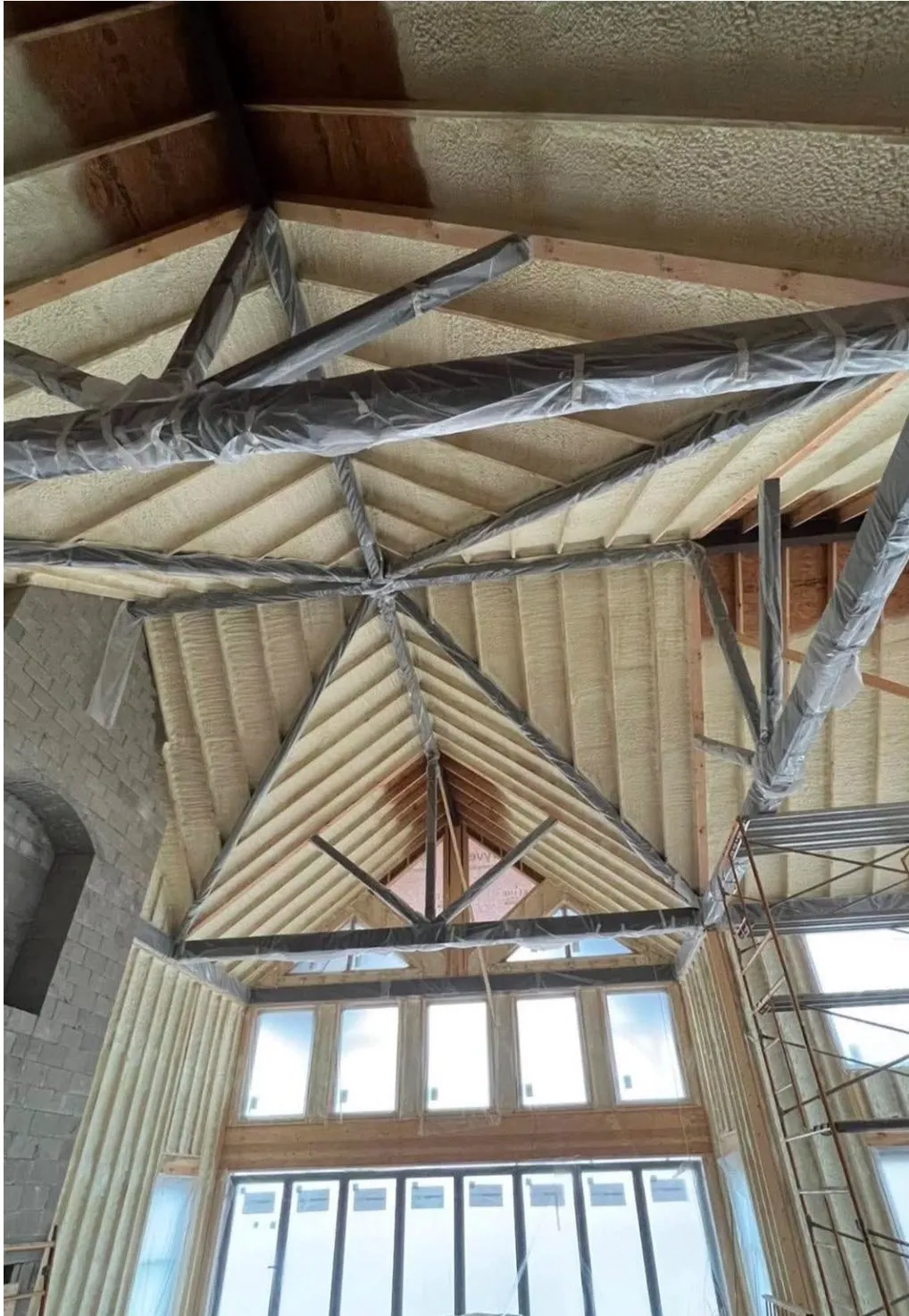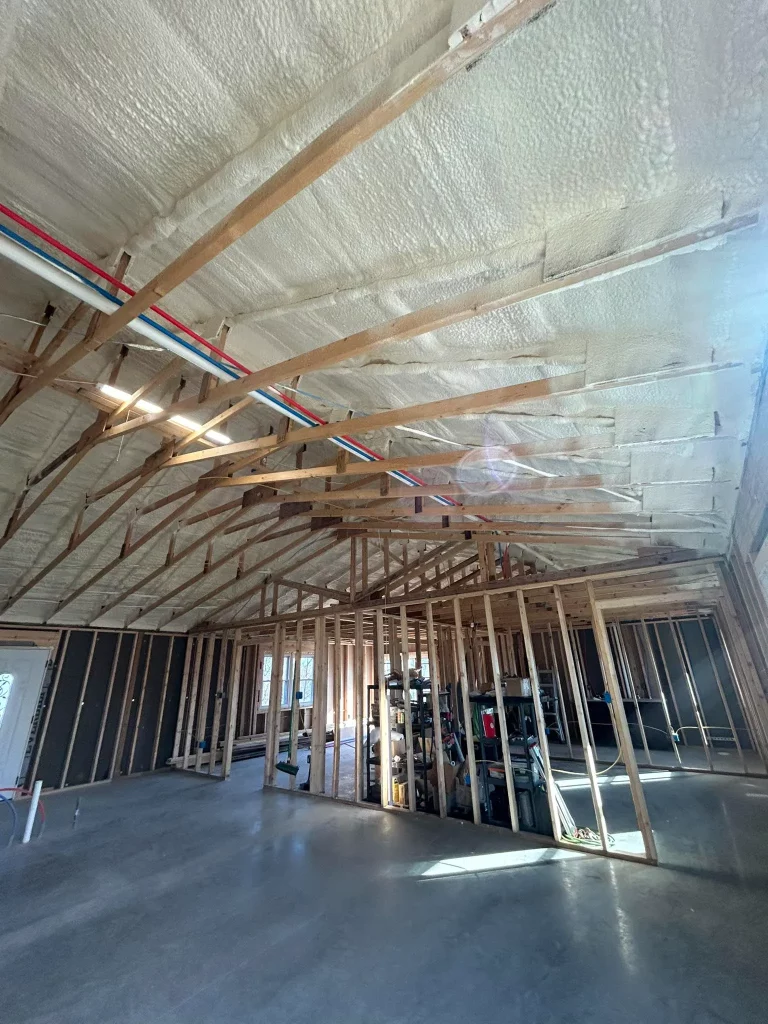
Spray foam insulation delivers substantial benefits for older Columbus homes, particularly those built before 1980 when insulation standards were minimal. The investment typically pays for itself within 3-7 years through reduced energy bills, while simultaneously addressing air leakage issues that plague vintage construction. Older homes in Columbus often experience 20-40% energy loss through gaps, cracks, and inadequate insulation—problems that spray foam uniquely solves by creating both an air barrier and thermal barrier in one application.
This comprehensive analysis examines the practical considerations, performance data, and decision factors that homeowners face when evaluating spray foam for vintage Columbus properties. Drawing from extensive field experience with Central Ohio’s housing stock, the information presented addresses the specific challenges of retrofitting homes built with outdated insulation practices.
Older Columbus homes present unique insulation challenges that spray foam addresses more effectively than traditional materials. These structures typically feature balloon framing, knob-and-tube wiring cavities, and settling foundations that create numerous air infiltration points. Spray foam’s expansive properties allow it to seal these irregular spaces while providing superior R-values compared to existing fiberglass or cellulose.
The material’s adhesive qualities help stabilize aging wall assemblies and reduce air movement that contributes to moisture problems. Columbus homes built in the 1950s-1970s often lack proper vapor barriers, making spray foam’s moisture management properties particularly valuable.
| Insulation Type | R-Value per Inch | Air Sealing Capability | Moisture Resistance |
|---|---|---|---|
| Closed-Cell Spray Foam | R-6.0 – R-7.0 | Excellent (complete seal) | High (vapor barrier) |
| Open-Cell Spray Foam | R-3.5 – R-4.0 | Excellent (complete seal) | Moderate (breathable) |
| Fiberglass Batts | R-3.1 – R-3.4 | Poor (gaps remain) | Low (absorbs moisture) |
| Cellulose | R-3.2 – R-3.8 | Moderate (settles over time) | Moderate (treated) |
Understanding the technical aspects helps homeowners make informed decisions about spray foam applications. The material’s chemical composition and curing process require specific environmental conditions and professional installation techniques that differ significantly from traditional insulation methods.
| Property | Closed-Cell | Open-Cell |
|---|---|---|
| Density (lbs/ft³) | 2.0 – 2.5 | 0.4 – 0.6 |
| Compressive Strength | 25-50 psi | 3-5 psi |
| Application Temperature Range | 60°F – 90°F | 60°F – 90°F |
| Cure Time to Touch | 30-60 seconds | 8-10 seconds |
| Full Cure Time | 24-48 hours | 8-24 hours |
Columbus weather patterns affect installation timing, particularly during winter months when temperature and humidity fluctuations can impact curing. Professional installers monitor ambient conditions and adjust application techniques accordingly to ensure proper adhesion and expansion.
Bonus Tip: Schedule spray foam installation during stable weather periods in late spring or early fall when temperature variations are minimal. This timing ensures optimal curing conditions and reduces the risk of installation complications.
Central Ohio’s humid continental climate creates specific challenges for older home insulation. Summer humidity levels averaging 70-80% can lead to condensation issues within wall cavities, while winter temperatures regularly dropping below 20°F stress thermal barriers. Spray foam’s performance characteristics align well with these regional conditions.
The material’s ability to prevent air movement eliminates convective heat transfer that becomes problematic during Columbus’s temperature swings. Traditional insulation materials lose effectiveness when air moves through them, a common issue in older homes with settling foundations and aging caulk around windows and doors.
Research from the Building Performance Institute indicates that Central Ohio homes built before 1980 can reduce energy consumption by 15-30% through comprehensive air sealing and insulation upgrades. Spray foam applications consistently achieve the higher end of this range due to complete cavity filling and superior air barrier properties.
Bonus Tip: Conduct a blower door test before and after installation to quantify air leakage improvements. This data helps validate performance expectations and identifies any remaining air sealing needs.

Ohio Valley Spray Foam specializes in retrofitting older Central Ohio homes with both closed-cell and open-cell spray foam systems. The company’s experience with vintage construction challenges ensures proper preparation and installation techniques that maximize performance while addressing structural limitations.
Spray foam can supplement existing insulation in many situations, particularly when applied to rim joists, basement walls, or other areas with significant air leakage. However, optimal performance often requires removing old insulation to address air sealing comprehensively.
Older homes typically require ventilation upgrades after spray foam installation due to dramatically reduced natural air exchange. Professional assessment determines specific ventilation needs based on home size, occupancy, and existing mechanical systems.
Energy efficiency improvements, including spray foam insulation, typically increase home values by 3-5% while making properties more attractive to buyers focused on operating costs and comfort.
Bonus Tip: Document all insulation work with before and after photos, energy bills, and professional assessments to demonstrate value improvements to potential buyers.
Spray foam insulation represents a significant upgrade for older Columbus homes, delivering measurable improvements in energy efficiency, comfort, and structural integrity. The decision should consider long-term ownership plans, current energy costs, and existing home condition.
Properties with high energy bills, comfort issues, or plans for long-term ownership typically see the greatest benefit from spray foam investment. The material’s durability means it provides value for decades without the settling or degradation common with traditional insulation materials.
Determining the best insulation strategy for older homes requires professional evaluation of structural conditions, existing systems, and performance goals. Ohio Valley Spray Foam provides comprehensive assessments that identify the most effective approaches for specific properties.
Contact Ohio Valley Spray Foam at [email protected] or (740) 373-3626 to schedule a detailed evaluation of your older Columbus home’s insulation needs. Professional assessment ensures that spray foam installation delivers maximum performance while addressing the unique challenges of vintage construction.
Spray foam insulation maintains its properties for 50+ years when properly installed, making it a permanent upgrade that outlasts multiple generations of traditional insulation materials. The material’s chemical stability prevents degradation from age, moisture, or pest activity.
Properly applied spray foam does not damage structural elements and often strengthens aging assemblies by reducing air movement and moisture infiltration. Professional installers adjust application techniques for vintage construction methods to prevent over-pressurization of wall cavities.
Spray foam requires minimal maintenance once installed, unlike traditional insulation that may need periodic inspection and replacement. The material does not settle, shift, or degrade under normal conditions, providing consistent performance throughout its lifespan.
Closed-cell spray foam provides significant sound dampening properties, reducing both airborne and impact noise transmission. This benefit is particularly noticeable in older homes with minimal sound barriers between rooms or from external sources.
While spray foam can be mechanically removed for electrical work or renovations, the process requires professional equipment and expertise. Planning future modifications during initial installation helps minimize removal needs and associated costs.